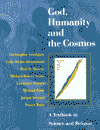The Paradox of the Development of Modern Humans
Jared Diamond has written that:
by 100,000 years ago many or most humans had brains of modern
human size, and some humans had nearly modern skeletal anatomy. Genetically,
those people of 100,000 years ago may have been 99.99% identical to humans
today.
but
The only features qualitatively distinguishing human behaviour
of 100,000 years ago from the behavior of animals were the widespread use of
...
crude stone tools, plus the use of fire. (Chimpanzees also use stone tools, but
less frequently.) At that time we were not even especially successful animals.
Clearly there is a great deal to explain about this crucial
and still not-well-understood period. The following are very marked in modern
human beings:
a) large, very
intricately interconnected neural circuitry in the forebrain, associated
with a high degree of learning and problem-solving ability.
b) the capacity for
language. This resides not just in the brain but in the ‘design’ of the
vocal tract. The extensive work (for example by Savage-Rumbaugh, 1993 )
carried out in the United States on teaching common and pygmy chimpanzees to
communicate by means of signs and visual ‘icons’, have indicated that language
comprehension probably preceded the appearance of vocalised speech by several
million years. This means that the
distinctively human feature of language is sophisticated vocalisation.
There is no way of being certain when the modern human vocal tract reached a
form which enabled it to produce the range of sounds required to speak any of
the 1600 different languages of the world. )
carried out in the United States on teaching common and pygmy chimpanzees to
communicate by means of signs and visual ‘icons’, have indicated that language
comprehension probably preceded the appearance of vocalised speech by several
million years. This means that the
distinctively human feature of language is sophisticated vocalisation.
There is no way of being certain when the modern human vocal tract reached a
form which enabled it to produce the range of sounds required to speak any of
the 1600 different languages of the world.
But it does seem that
this was a decisive evolutionary step, perhaps as little as 50,000 years ago, which
allowed the development of such characteristic human activities as art, music,
technology (specialised tools, rope, boats, sewn clothing) and the
long-distance transport of precious objects. Language is also extremely important in the development of religion, since it
provides such a powerful medium for symbolic expression and communication. Language is also extremely important in the development of religion, since it
provides such a powerful medium for symbolic expression and communication.
c) the capacity for self-awareness - we are not merely
conscious of our environment but of ourselves, and of our having a past and a
future (including an eventual death).
d) human cultural evolution has given rise to science and
technology - we know at least in outline ‘the common creation story’ of our
cosmic and evolutionary origins; we investigate and alter the whole surface of the planet. we investigate and alter the whole surface of the planet.
However, it is important to exercise a degree of scientific
caution, particularly in the area of language - other species also communicate.
Vervet monkeys may only have ten grunt-words for predators, but dolphins and whales seem to have much more intricate signalling systems.
Chimpanzees do have a certain language-learning ability. And it is impossible
to pronounce definitively on another creature’s self-understanding, even a
human’s(!) - the so-called ‘problem of other minds.’ but dolphins and whales seem to have much more intricate signalling systems.
Chimpanzees do have a certain language-learning ability. And it is impossible
to pronounce definitively on another creature’s self-understanding, even a
human’s(!) - the so-called ‘problem of other minds.’ Moreover, our account of the Neanderthals given above makes clear how fine
these distinctions are, anthropologically. Proto-religious behaviour seems not
to be confined to H.Sapiens. Moreover, our account of the Neanderthals given above makes clear how fine
these distinctions are, anthropologically. Proto-religious behaviour seems not
to be confined to H.Sapiens.
Email
link | Feedback | Contributed by: Dr. Christopher Southgate and Dr. Michael Robert Negus
Source: God, Humanity and the Cosmos (T&T Clark, 1999)
|





